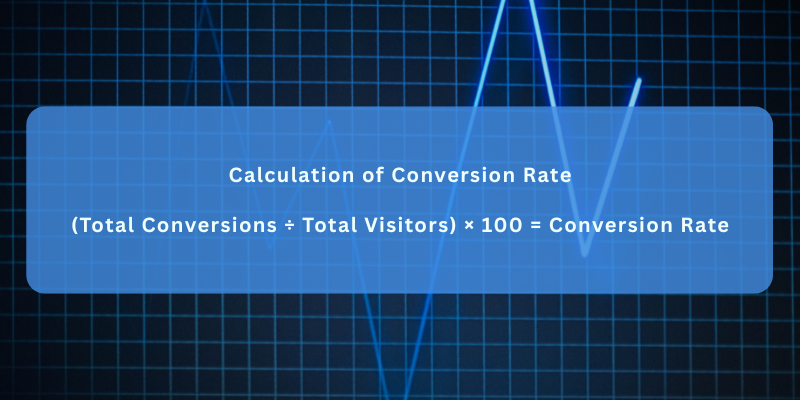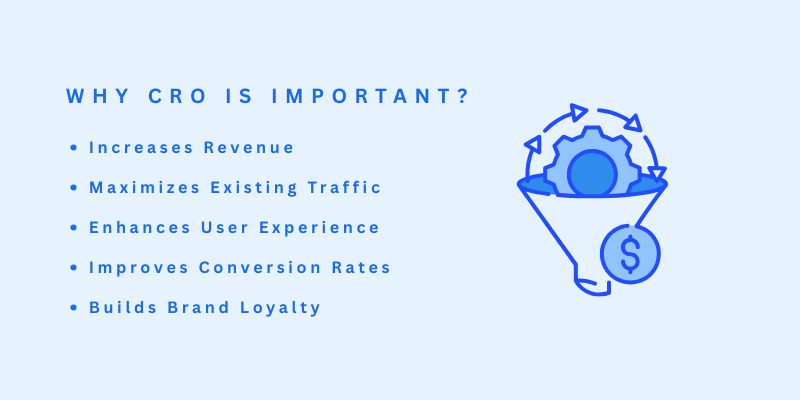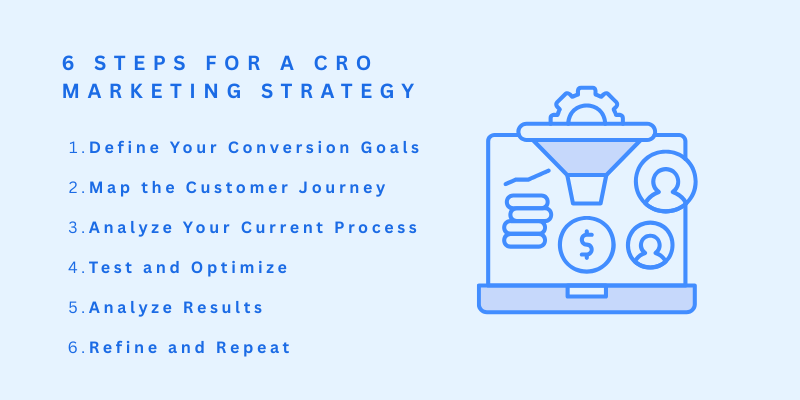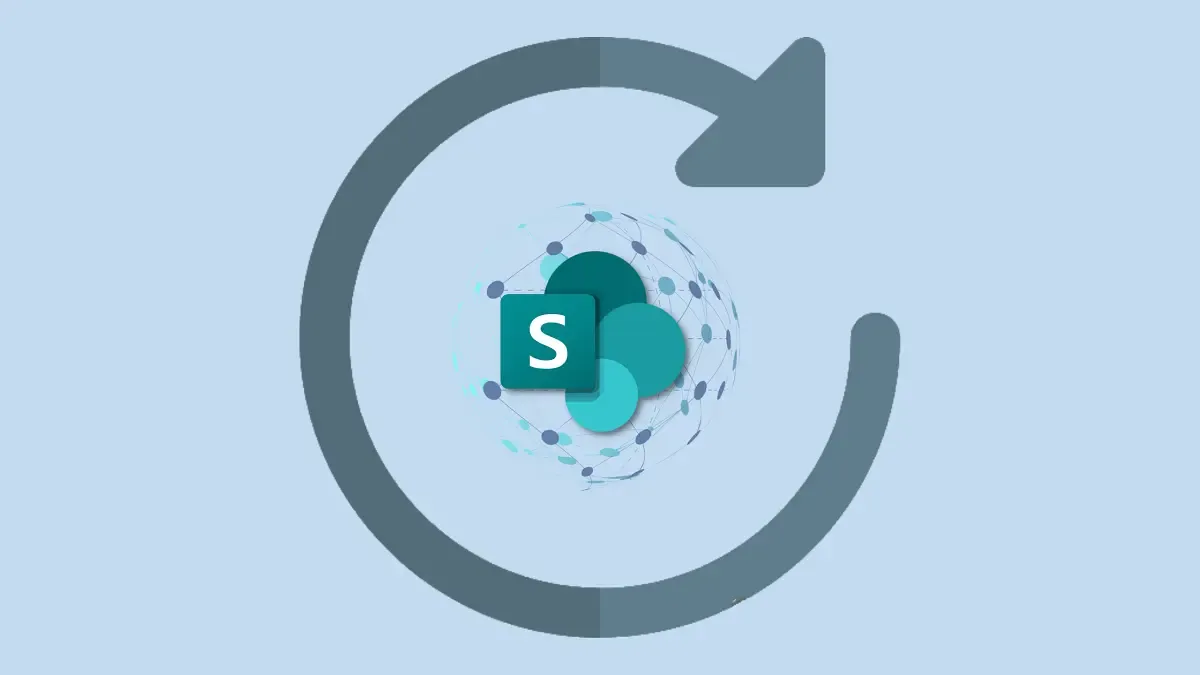CRO stands for Conversion Rate Optimization. It’s a marketing method focused on increasing the percentage of website visitors who complete a desired action, also known as a conversion. What is CRO? It refers to various strategies aimed at optimizing your website to encourage users to perform specific actions.
While conversions are often associated with purchases, they can represent various goals depending on your business objectives, such as:
- Subscribing to a newsletter or email list
- Registering personal details (e.g., email address)
- Spending a specific amount of time on your site
- Downloading resources like white papers or reports
- Upgrading to a higher service tier
These Key Performance Indicators (KPIs) drive revenue and engagement, helping your business grow whether directly through sales or indirectly by fostering deeper customer relationships.
Calculation of Conversion Rate
The conversion rate is a key performance metric used to measure the effectiveness of a marketing campaign, website, or sales funnel in turning visitors or leads into actual customers or desired actions. It provides valuable insight into how well a business is achieving its objectives, whether it's generating sales, sign-ups, or other target actions.

The formula is simple: (Total Conversions ÷ Total Visitors) × 100 = Conversion Rate
For example, if 2,000 out of 10,000 visitors convert in September, your conversion rate is 20%.
Here are the outcomes of tracking the conversion rate on a regular basis:
- Drives Revenue: Even micro-conversions (like content downloads) fuel engagement, which often leads to future sales.
- Maximizes Value from Existing Traffic: Improving your website experience boosts conversions without needing to attract new visitors, making it cost-effective.
- Enhances User Experience: Small changes like clearer fonts, intuitive layouts, or prominent CTAs can significantly improve how visitors interact with your site.
- Builds Brand Loyalty: Increased engagement strengthens brand affinity, keeping your business top of mind and encouraging word-of-mouth referrals, often supported by strong social media marketing digital PR strategies and strong social media marketing
Why Is CRO Important?
Conversion Rate Optimization (CRO) plays a key role in driving business growth by transforming more of your existing website traffic into meaningful conversions.
One of its key benefits is the ability to increase revenue without necessarily increasing your digital marketing spend.

Even small actions, such as a visitor downloading a white paper or signing up for a newsletter build engagement and nurture leads, often paving the way for future purchases and long-term customer relationships.
Working with an SEO service provider can help optimize your site for better conversions, ensuring every visitor has the highest chance of completing a desired action. For instance, local SEO services for law firms can help attract more local clients by ensuring that a firm’s website ranks highly in local search results, improving visibility and increasing the likelihood of conversions from region-specific prospects. Similarly, e-commerce SEO services can optimize online stores to rank better for relevant product searches, driving more targeted traffic and boosting conversion rates.
Another major advantage of CRO is that it maximizes the value of your current traffic. Instead of constantly investing in attracting new visitors, optimizing your site’s performance helps you get more out of the audience you already have.
This approach is far more cost-effective and provides a better return on investment, ensuring that every visitor has the highest possible chance of converting.
CRO also significantly enhances the user experience. By making thoughtful adjustments, such as improving page load speed, clarifying fonts, refining layouts, or making Call-to-Action (CTA) buttons more prominent, you remove friction and make it easier for visitors to complete desired actions. Integrating an enterprise SEO service can further improve visibility and drive more relevant traffic to your site, maximizing your conversion potential.
A smoother, more intuitive browsing experience keeps users engaged and reduces bounce rates, directly contributing to higher conversions.
Lastly, CRO helps to build strong brand loyalty. As your website becomes more user-friendly and responsive to customer needs, visitors develop a stronger connection with your brand.
Positive experiences lead to repeat visits, referrals, and increased trust, keeping your brand top of mind when customers are ready to make a purchase.
Get Your Free SEO Audit Report Today!
How to Build a CRO Marketing Strategy?
Investing time and resources into a project without seeing meaningful results can be a serious setback for any business.
So, how can you overcome a low conversion rate and get your business momentum back on track? The answer lies in CRO marketing.
Here’s a step-by-step guide to build a CRO marketing strategy:
1. Define Your Conversion Goals
The starting point of any successful CRO strategy is knowing exactly what you want to achieve. This means clearly identifying what a conversion looks like for your business.
A conversion is any action you want visitors to take that brings value whether that’s making a purchase, signing up for a newsletter, filling out a contact form, downloading a resource, or even spending a specific amount of time on a page.
Your Key Performance Indicators (KPIs) are built around these actions. For example:
- E-commerce: Focus on e-commerce by measuring actions such as purchases, add-to-cart actions, and checkout completions to optimize the shopping journey and boost conversions.
- Lead Generation: In lead eneration, key metrics include form submissions, email sign-ups, and demo requests, which help identify and nurture potential customers.
- Content Marketing: For effective content creation, monitor engagement through eBook downloads, white paper access, and video views to evaluate performance and drive deeper audience interaction.
Without these well-defined conversion goals, you won’t be able to measure success or determine if your optimization efforts are effective. Additionally, retainer services can help businesses maintain consistent CRO efforts, allowing for long-term, continuous optimization rather than just one-time fixes.
2. Map the Customer Journey
To optimize conversions effectively, it’s essential to understand how visitors find your website and what they do once they’re there.
This process is known as mapping the customer journey. It involves tracing every step a user takes, from discovering your brand (via search engines, ads, or social media) to navigating your website and moving toward a conversion.
By analyzing data such as:
- Demographics: Age, gender, location
- Behaviors: Pages visited, time spent, bounce rate
- Interests & Priorities: What topics or products they engage with most
Also, with advanced tools like Google Analytics, heatmaps, and session recordings you can easily visualize how users interact with your site, showing where they engage and where they drop off.
Once you understand the journey and know which segments are most likely to convert, you can tailor your messaging, offers, and user experience to meet their needs, delivering relevant content and smoother navigation at every touchpoint.
3. Analyze Your Current Process
After mapping the journey, the next step is to pinpoint why visitors might not be converting. This involves performance marketing services which will help to audit your current site performance and user experience.
Common barriers to conversion include:
- Technical Issues: Slow-loading pages, broken links, or images that fail to display properly
- Design Flaws: Poor layout, cluttered pages, or fonts that are hard to read
- Weak CTAs: Buttons that don’t stand out or use unconvincing language
- Trust Gaps: Lack of social proof (reviews, testimonials), unclear messaging, or confusing navigation
- Annoyances: Excessive pop-ups or intrusive ads that frustrate users
One key tactic is to identify high-traffic, low-conversion page areas of your site that attract a lot of visitors but fail to convert them.
These are prime opportunities for optimization because even small improvements here can lead to significant gains.
By diagnosing these problem areas through a mix of data analysis and user feedback, you create a roadmap for targeted improvements that remove friction and make it easier for visitors to take action.
4. Test and Optimize
Testing allows you to make data-driven decisions by showing which changes genuinely enhance conversion rates.
There are two primary types of tests:
A/B Testing (Split Testing):
This involves A/B Testing, where two versions of a web page (or a specific element) the original (Control) and a variant (Variation) are compared to determine which performs better.
You change just one variable at a time, such as:
- Headline text
- Call-to-Action (CTA) wording or button color
- Image placement
- Page layout
For example, you might test a red “Buy Now” button versus a blue one to see which leads to more clicks. Since only one thing changes, you can clearly identify what caused the difference in performance.
Multivariate Testing (MVT):
This method tests multiple variables simultaneously to see how different combinations affect conversions.
For instance, you might test:
- Different headlines and images at the same time
- Several CTA button styles combined with various font choices
MVT is more complex and usually requires a higher volume of website traffic to gather meaningful results because there are more combinations to analyze.
Considere these best practices for testing:
- Test One Thing at a Time (for A/B): To avoid confusion, keep tests focused. This makes it easier to pinpoint what’s working and what’s not.
- Ensure Statistical Significance: Run the test long enough to collect enough data cutting a test short can give misleading results.
- Segment Results: Sometimes a change might work well for one audience segment but not another. Break down results by device type (mobile vs. desktop), location, or user demographics for deeper insights.
- Don’t Rely on Assumptions: Even small changes like button wording can have surprising effects, and what you think will work best isn’t always the winner. This is where UI UX Audit solutions and continuous testing come into play.
Given this, testing and optimizing is an ongoing process. It helps you systematically improve your site's performance, taking the guesswork out of design decisions and ensuring your site is always moving toward higher conversion rates.
Explore Our Digital Marketing Service
5. Analyze Results
After running your tests, the next vital step is to analyze the outcomes to understand whether your changes made a real impact.
The goal here is to compare your test results against the original KPIs (Key Performance Indicators) you set at the start, whether that’s purchases, form submissions, downloads, or any other conversion goal. For companies offering b2b website development services, this analysis is crucial for optimizing website performance and ensuring that design changes drive meaningful business results.
Here’s how to approach it;
Check Conversion Improvements: Look at the raw numbers first. Did the test variant outperform the original version in terms of conversions? For example, if you were testing a new CTA button, did it generate more clicks or sales than the original?
Ensure Statistical Significance: It’s not enough to see a slight improvement you need to confirm that the results are statistically significant. This means the outcome is unlikely to be due to random chance. Tools like Google Optimize, Optimizely, or even basic online calculators can help you verify significance based on your traffic and conversion data.
Look Beyond the Main KPI: Sometimes a test may improve conversions but harm other important metrics. For example, a more aggressive pop-up might boost email sign-ups but increase bounce rates. Always review secondary metrics like:
- Bounce rate
- Average session duration
- Exit rate
- Engagement levels
Additionally, working with an international SEO agency can help you analyze global trends in your test results, ensuring that the improvements you make work effectively across multiple markets.
Segment Your Results: Dive deeper by segmenting the data. This helps you uncover hidden insights that can inform more precise future optimizations.
Document Your Findings: Keep a record of what was tested, what the hypothesis was, and the results. This log helps you avoid repeating ineffective ideas and builds a knowledge base for your team.
Learn from Failures: Not every test will be a winner and that’s okay. Even if a variant underperforms, it provides valuable insights about your audience’s preferences and behavior. Ask yourself: Why didn’t it work? What might you try differently next time?
In addition to the above, utilizing experience UI UX audit services can provide a thorough evaluation of the user interface and user experience, offering more insights into where improvements can be made, beyond just the test variants.
6. Refine and Repeat
Conversion Rate Optimization (CRO) doesn’t stop after a single round of testing.
In fact, it’s a continuous, iterative process designed to keep improving your website’s performance over time.
Even if your latest test yielded positive results, there’s always room for further enhancement.
User behavior, market trends, and technology constantly evolve, so what works today might not be as effective tomorrow.
Here’s how to approach this step:
- Apply What You’ve Learned: Take the insights from your analysis whether a success or a failure and use them to improve your site. For example, if you learned that a larger CTA button increased conversions, you might roll out similar design tweaks to other areas of the site.
- Prioritize Next Steps: Based on your testing backlog and ongoing site data, decide what to focus on next. This might be a small refinement (like adjusting headline wording) or a larger strategic overhaul (like redesigning a digital banner or landing page).
- Keep Testing: Each improvement opens up new testing opportunities. After optimizing a CTA, your next test might focus on trust elements, imagery, or form design. Continuously exploring new hypotheses ensures steady progress.
- Stay Aligned with Goals: As your business evolves, so do your goals. Periodically reassess your KPIs and conversion goals to ensure your CRO efforts remain aligned with current priorities.
- Monitor Trends and User Behavior: Keep an eye on broader market shifts, competitor changes, and new technologies that might influence user behavior or expectations. Adapting to these changes keeps your site competitive and relevant.
That said, CRO is a cycle of improvement.
Each round of testing, analysis, and refinement builds on the last, driving better performance and ensuring your site continues to meet (and exceed) user expectations over time.
3 Best Practices of Conversion Rate Optimization (CRO)
If you’ve explored digital marketing strategies, you’ve probably encountered lists of "best practices" for conversion rate optimization (CRO).
These are strategies believed to guarantee improved website conversion rate optimization. However, it’s important to remember that these “best practices” are based on past successes that may not necessarily work for your specific business or audience today.
Some common CRO website best practices include:
- Using strong colors for all call-to-action (CTA) buttons: While it’s often suggested that bold colors will make CTA buttons stand out and drive conversions, this isn’t always true. It’s important to test different colors and styles through CRO analysis to see what resonates best with your audience.
- Relying on urgency tactics (e.g., time-limited offers): Creating a sense of urgency, such as limited-time offers, can work for some websites, but it may backfire if overused or not in line with user intent. It’s critical to analyze user behavior using a conversion rate optimization tool to determine when urgency is appropriate.
- Always displaying testimonials: While testimonials are a powerful trust signal, their effectiveness depends on the context and type of product or service. For some websites, customer reviews and testimonials might boost conversions, but for others, they could clutter the user experience. Testing and data-driven decisions through CRO tools are key here.
However, blindly applying best practices may not lead to optimal results. Over time, it could prevent you from unlocking your website's full potential for growth. Instead, consider focusing on the core principle of website conversion optimisation:
FAQs: What is CRO (Conversion Rate Optimization)?
What is CRO in marketing?
CRO in marketing stands for Conversion Rate Optimization. It refers to the process of improving your website or landing page to increase the percentage of visitors who complete a desired action, such as making a purchase, signing up for a newsletter, or downloading content. The goal of CRO is to enhance user experience and maximize conversions without increasing your traffic.
What does CRO marketing involve?
CRO marketing involves analyzing user behavior, identifying areas of improvement on your website, and testing changes that could boost conversions. This includes optimizing design, improving content, streamlining navigation, and enhancing calls-to-action (CTAs). CRO marketing focuses on maximizing the value of existing website visitors by making the conversion process as seamless and intuitive as possible.
What is the meaning of CRO in marketing?
CRO in marketing refers to Conversion Rate Optimization, which is a set of strategies used to increase the number of visitors who take a desired action on your website. This could involve making changes to website design, content, or functionality to improve the user experience and drive higher engagement and conversions.
How do you perform a CRO analysis?
CRO analysis involves evaluating your current website performance and identifying areas where conversions are low. Tools like Google Analytics, heatmaps, and user session recordings can help you understand user behavior. By analyzing data such as bounce rates, session duration, and conversion paths, you can uncover opportunities for optimization and implement A/B or multivariate tests to improve the conversion rate.
How can I improve my CRO marketing strategy?
Improving your CRO marketing strategy involves defining clear conversion goals, understanding the customer journey, analyzing your website for performance issues, testing various elements (like CTAs, layouts, and design), and refining your site based on test results. Continuous monitoring and optimization are key to maintaining and improving conversion rates over time.
What are the benefits of CRO in marketing?
The benefits of CRO in marketing include increased revenue from existing traffic, a better user experience, improved brand loyalty, and reduced marketing costs. By focusing on improving conversions rather than just attracting more traffic, businesses can make the most out of their current audience and create long-lasting customer relationships.
Conclusion
Conversion Rate Optimization (CRO) is the practice of systematically improving your website to increase the percentage of visitors who complete a desired action whether that’s making a purchase, signing up, or engaging with your content. What is CRO? It is the strategy of optimizing the user experience to convert more visitors into customers.
Rather than simply driving more traffic, CRO focuses on making the most of your existing audience by enhancing the user experience, removing friction, and guiding visitors toward meaningful interactions.
It’s a continuous process of testing, analyzing, and refining, helping businesses achieve sustainable growth by turning more of their visitors into loyal customers.









